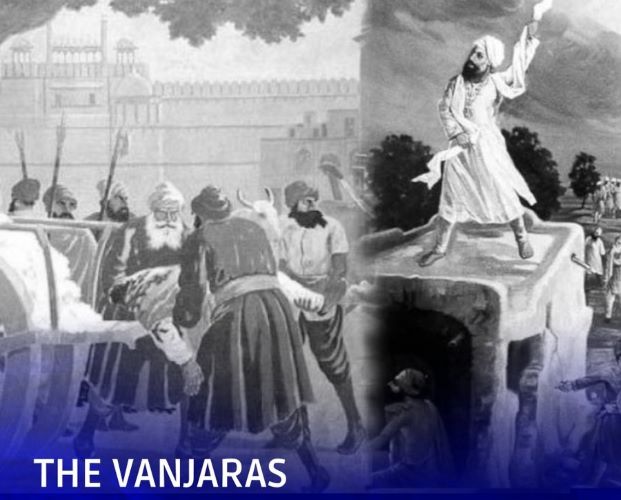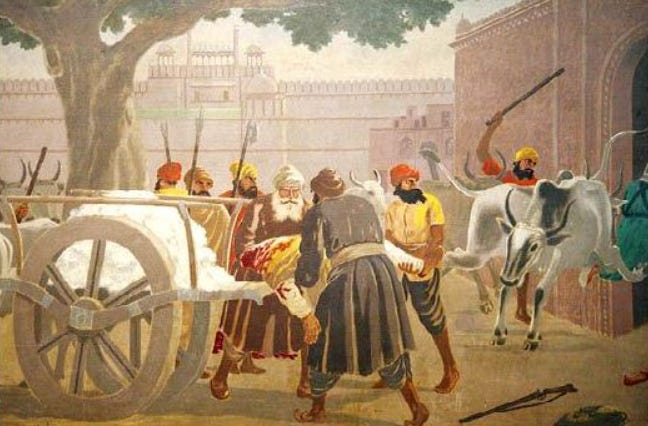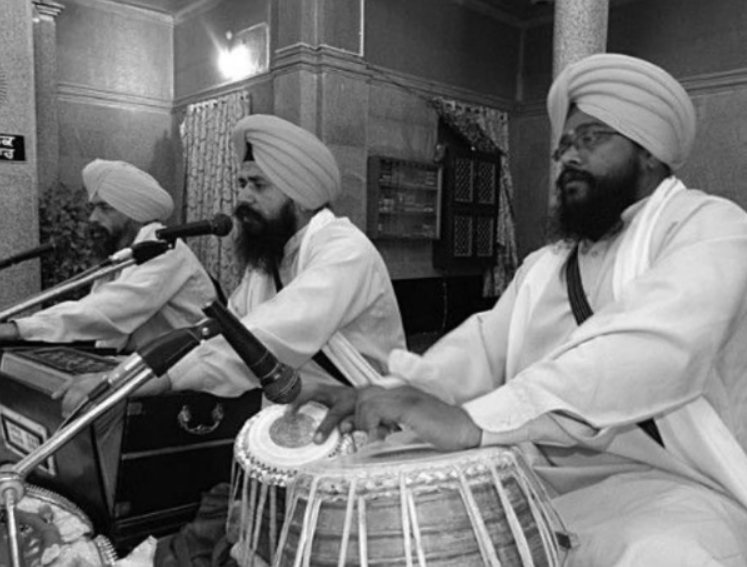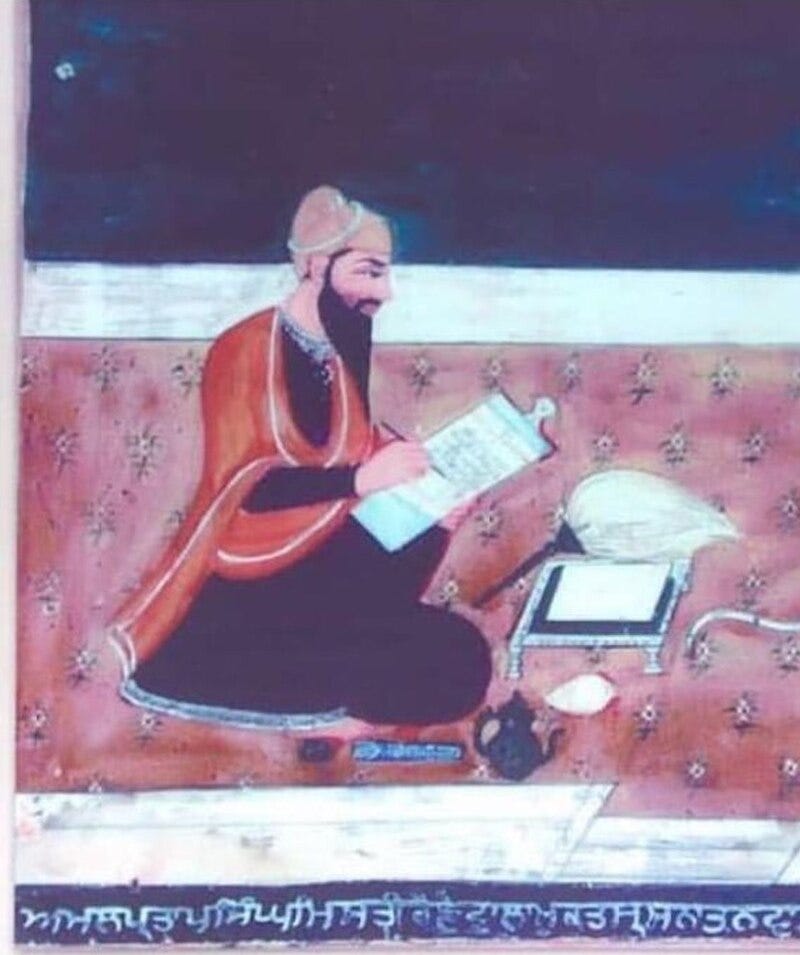
A description of the Vanjaras, a group of wandering traders, using translations from Piara Singh Padam’s ‘Sikh Sampradavali.’
“Their sails are set, ropes new, and oars of ivory,
Loaded with goods the seafarers have commenced their voyage,
O Unique Allah, let them reach their destination safely.”
[About three hundred years back, Shah Abdul Latif Bhittai (1689/1690 – 21 December 1752), the Great Sufi Poet, sung the Vanjaras, the sea traders of Sindh, in his poetry. He used the word Vanjara for the seafarers. The above verse has been taken from the Bhittai’s poetry. A Sikh writer, however, has used the word Vanjara for the wandering Sikh traders. Sindh Courier is reproducing the article]

RATTAN SINGH (SIRPENTAPOTAMIA)
Editor’s note: The text shared here is a translation of the Vanjara section of Piara Singh Padam’s Sikh Sampradavali. Below are some figures controversially mentioned as Vanjara by Piara Singh Padam but it is the opinion of the author that two of these figures are likely Rajputs.
Introduction
The Vanjaras are a caste of wandering merchants who primarily live in states such as Andhra Pradesh, Telangana, Karnataka and Madhya Pradesh; they are distinguished by their proximity to Sikhism. Although, some Vanjaras are not Sikh themselves; the vast majority are Nanakpanthis and have a strong connection to Hazur Sahib as a pilgrimage site. There is also a large growing minority that initiate themselves into the Khalsa by taking pahul.
Piara Singh Padam’s ‘Sikh Sampradavali’ describes them as:
ਵਣਜਾਰਾ ਜਾਤੀ, ਭਾਰਤ ਦੀ ਪੁਰਾਣੀ ਚੱਕ੍ਰਵਰਤੀ ਵਪਾਰੀ ਜਮਾਤ ਹੈ ਜੋ ਕਿ ਸਦੀਆਂ ਤੋਂ ਘੁੰਮ ਫਿਰ ਕੇ ਹਰ ਥਾਂ ਹਰ ਚੀਜ਼ ਪੁਚਾਉਣ ਦਾ ਕਾਰਜ ਕਰਦੀ ਰਹੀ ਹੈ। ਇਸ ਦੀ ਪ੍ਰਫੁੱਲਤਾ ਦਾ ਵੱਡਾ ਸਬੱਬ ਇਹ ਬਣਿਆ ਕਿ ਵੇਲੇ ਦੀ ਹਰ ਸਰਕਾਰ ਨੂੰ ਫੌਜ ਦੀ ਲੋੜ ਲਈ ਤਰ੍ਹਾਂ ਤਰ੍ਹਾਂ ਦਾ ਸਮਾਨ ਸਮੇਂ ਸਿਰ ਮਿਲਣਾ ਜ਼ਰੂਰੀ ਸੀ ਤੇ ਇਹ ਠੇਕੇਦਾਰ ਵਪਾਰੀ ਹੀ ਇਸ ਤਰ੍ਹਾਂ ਹਰ ਮਾਲ ਮੁਹੱਈਆ ਕਰਨ ਦਾ ਮੁਕੰਮਲ ਪ੍ਰਬੰਧ ਕਰ ਸਕਦੇ ਸਨ।
The Vanjara caste is India’s old wandering merchant class that has been wandering for centuries, fulfilling the duty of delivering everything to every place. The main reason behind their prosperity is that it was important for every government to receive various kinds of goods and only these contracted merchants could fulfil those requirements.
‘The Vanjaras’ by @SirPentapotamia.
A description of the Vanjaras, a group of wandering traders, using translations from Piara Singh Padam's 'Sikh Sampradavali.'
LINK: https://t.co/fOTE4KLUUq pic.twitter.com/QWVAr1sNlB
— The Khalsa Chronicle (@KhalsaChronicle) January 29, 2024
Although they were wandering traders, they were not the only ones that were involved in the wandering trade business. Lubanas were salt traders, who eventually intermarried into Vanjaras depending on the location. Other trading castes like Khatris and Banias were occupied with more administrative-based tasks and foreign trade.

Mention in Sikh texts
The Sri Guru Granth Sahib itself contains many mentions of Vanjaras. It is mentioned by Guru Nanak Dev Ji, Guru Amar Das Ji, Guru Ram Das Ji and Guru Arjan Dev Ji, alongside Bhai Gurdas. All of these mentions use Vanjaras as a metaphor for devotees and is often juxtaposed with the role of the Shah, as an administrator. One of the more interesting usages come from Guru Nanak Dev Ji’s bani:
ਆਪੇ ਜਾਣੈ ਆਪਿ ਪਛਾਣੈ ਸਭੁ ਤਿਸ ਕਾ ਚੋਜੁ ਸਬਾਇਆ ॥੧੧॥ ਆਪੇ ਸਾਹੁ ਆਪੇ ਵਣਜਾਰਾ ॥
He himself knows and He himself realizes; this whole world is all his play. He is the Shah and He is the Vanjara.
There is also an early pothi of the Adi Granth called the Vanjara pothi, dated to 1601. They may have played an important role as custodians of this pothi hence their naming after it. This allows us to see how early the Vanjaras had an impact in Sikhi, finding mention among the earlier Gurus alongside Bhai Gurdas.
Famous Sikhs
In his book, Piara Singh Padam mentions five great Vanjaras:
(੧) ਮੱਖਣਸ਼ਾਹ ਲੁਬਾਣਾ (Makhan Shah Lubana)
(੨) ਲੱਖੀ ਸ਼ਾਹ ਵਣਜਾਰਾ (Lakhi Shah Vanjara)
(੩) ਨਗਾਹੀਆ ਸਿੰਘ (Naghia Singh)
(੪) ਭਾਗੂ ਵਣਜਾਰਾ (Bhagu Vanjara)
(੫) ਭਾਈ ਮਨੀ ਸਿੰਘ ਪੁਆਰ ਤੇ ਉਸਦਾ ਬੰਸ (Bhai Mani Singh Puar and his descendants)
Makhan Shah Lubana
Makhan Shah Lubana was a resident of Muzaffarbad, Kashmir and born in a Nanakpanthi household, since his great-grandfather. Makhan Shah Lubana was born in 1646 and propagated Sikhi using his resources as a wealthy trader.
Lakhi Shah Vanjara
Lakhi Shah Vanjara was from Khairpur, Alipur and being rich, he lived in Delhi. His eight sons were all devout Sikhs. His family including his son, Naghia Singh, and other sons were involved in the plan to cremate Guru Tegh Bahadur without alerting the Mughal authorities.
Naghia Singh
Naghia Singh was the eldest son of Lakhi Shah Vanjara and he went from Delhi to Amritsar upon hearing about the Mughal army’s attack there. On the 29th of March 1709, he was martyred whilst fighting in Amritsar.

Bhagu Vanjara (Bhagwant Singh)
Bhagwant Singh was an important supplier of Mughal armies in the Deccan. Since Aurangzeb was impressed with his work, he gave him an official rank with 5000 soldiers. As the situation changed, Bhagwant Singh joined forces with the Yousafzais to form a breakaway state on the Mughal-Afghan frontier, near Bannu called Bangash. Aurangzeb stripped him of his rank but he continued to aid Aurangzeb so he later restored it, alongside the soldiers, a horse and an elephant. He later aided Banda Singh Bahadur and hid him to save him from the Mughal armies.
Bhai Mani Singh Puar and his descendants
Bhai Mani Singh is an exalted figure in Sikhi; he had been in service of the Gurus since Guru Har Rai Ji. He was a great scholar and also fought in many battles. Bhai Mani Singh’s grandfather, Ballu Rao had experience fighting in Guru Hargobind Ji’s army. His brother, Bhai Dyala, was killed alongside him in Delhi. Alongside this, three of his sons were killed at Chamkaur and his son, Bachittar Singh, famous for spearing a drunk elephant during a skirmish with the Mughals.
Although, Piara Singh Padam refers to both Bhai Mani Singh and Bhagwant Singh as Vanjaras, both their identities are debated. Some suppose them to be Rajputs and others suppose Bhai Mani Singh to be a Kamboj so the topic remains a fierce debate as of yet.
Also read: The Sikhs Demand Their Homeland – Overview of the Book
_______________________________